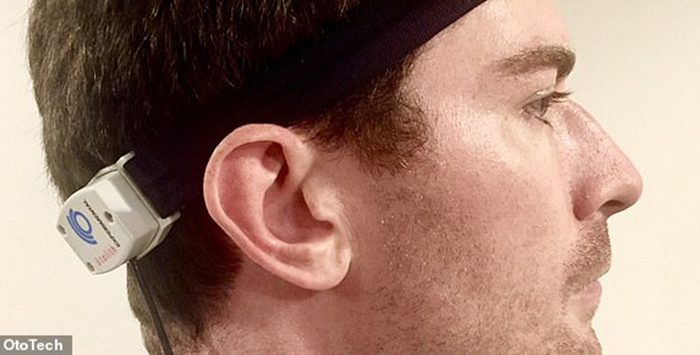A Washington, D.C.-based startup called Otolith Labs has developed a novel wearable device that could eliminate motion sickness without the need for drugs. The technology provides informational masking to the vestibular system which uses natural neurological pathway to assist the patient in ‘tuning out’ the source of their condition.
Read more Philips Releases New SmartSleep Headband That Uses Science to Help You Achieve Deep Sleep
Called OtoTech, the prototype device is worn around the head and delivers subtle vibrations to change how the brain interprets motion.
Motion sickness can be an exhausting condition for many people, stopping them from traveling and engaging in various activities such as sailing. There are a few drugs available to control motion sickness, but they have side effects such as drowsiness, reports MedGadget.
The headband is equipped with a vibrating gadget, and placed behind the ear. The vibrating module stimulates the vestibular system via bone conduction. Because the transmitted signals are disorderly and noninformative, they are filtered out by the cerebellum, which triggers the brain to completely ignore the motion signals. This ends the conflict between the eyes and vestibular system, which is the cause of motion sickness.

“The working hypothesis is that [the vibration] causes a chaotic and noninformative stimulus to go to the brain,” Samuel Owen, the creator of the device told Defense One.
“Somewhere, probably the cerebellum, there’s a filtering mechanism that filters out noninformative sensed information. It’s the reason you don’t notice the shirt on your back right now,” he added.
Read more HUMM’s Edge Headset Stimulates Brain to Boost Memory and Kicks Your Learning Speed into Overdrive
This new device could be hugely beneficial to the U.S. military as many military personnel suffer from motion sickness. A 2009 study by the Naval Aerospace Medical Research Laboratory found that more than half of soldiers got sick while riding in Army vehicles. Roughly 25% of military personnel got sick on “moderate seas” and 70% on “rough seas.” In the air, as many as 50% of personnel get airsick; even 64% of parachutists reported episodes, according to Defense One.












